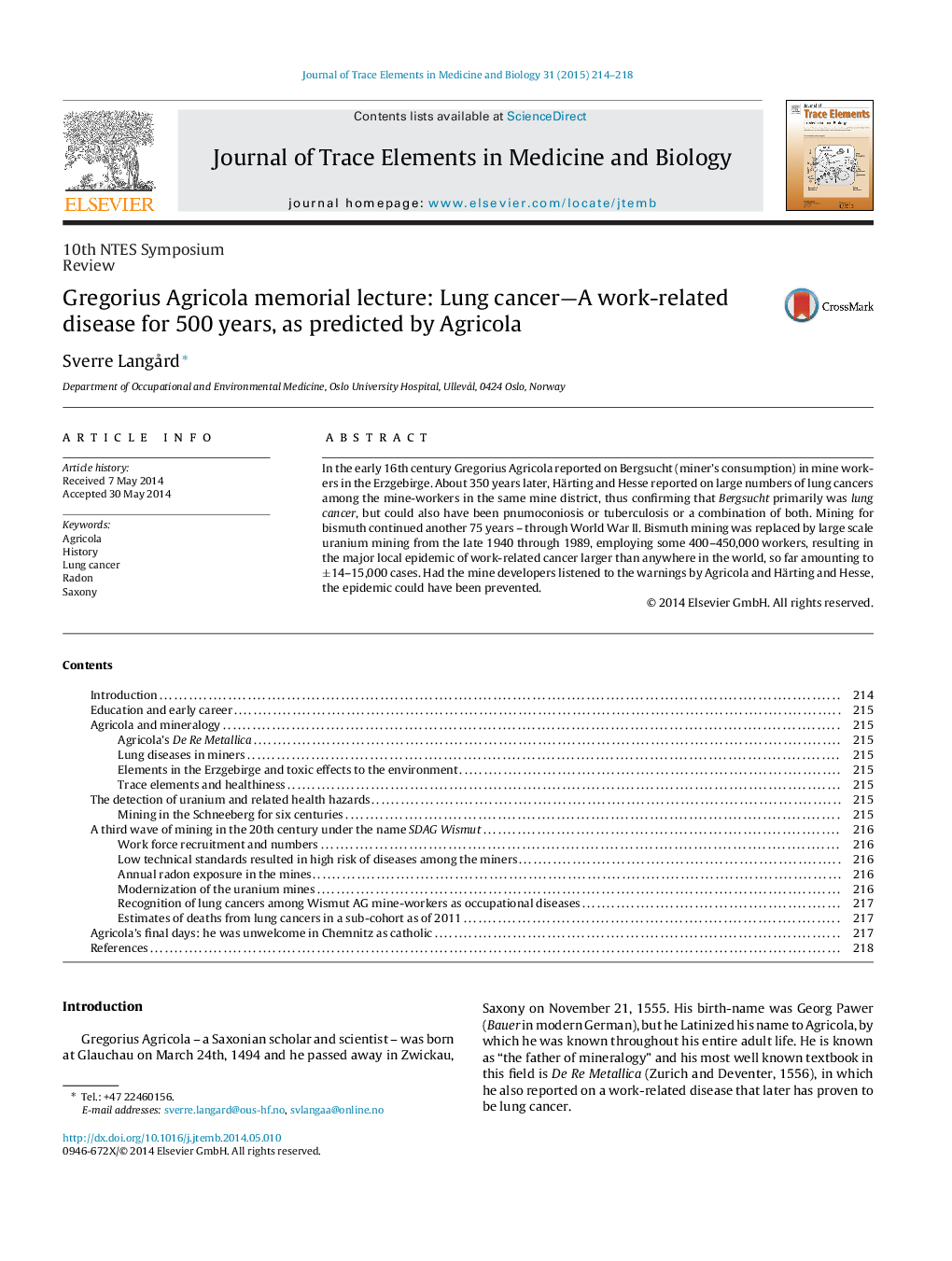| Article ID | Journal | Published Year | Pages | File Type |
|---|---|---|---|---|
| 1226396 | Journal of Trace Elements in Medicine and Biology | 2015 | 5 Pages |
In the early 16th century Gregorius Agricola reported on Bergsucht (miner's consumption) in mine workers in the Erzgebirge. About 350 years later, Härting and Hesse reported on large numbers of lung cancers among the mine-workers in the same mine district, thus confirming that Bergsucht primarily was lung cancer, but could also have been pnumoconiosis or tuberculosis or a combination of both. Mining for bismuth continued another 75 years – through World War II. Bismuth mining was replaced by large scale uranium mining from the late 1940 through 1989, employing some 400–450,000 workers, resulting in the major local epidemic of work-related cancer larger than anywhere in the world, so far amounting to ±14–15,000 cases. Had the mine developers listened to the warnings by Agricola and Härting and Hesse, the epidemic could have been prevented.
